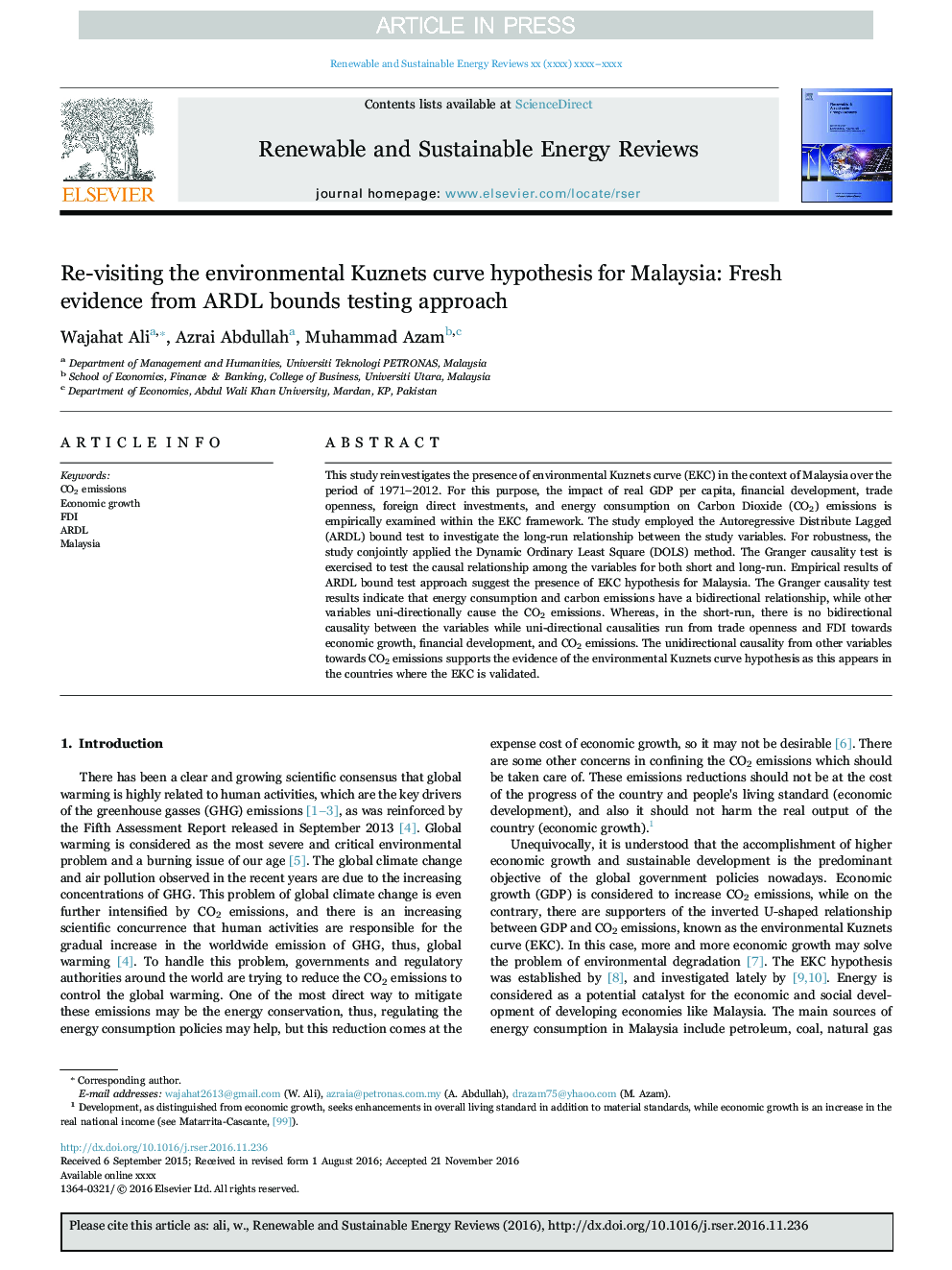| Article ID | Journal | Published Year | Pages | File Type |
|---|---|---|---|---|
| 5482991 | Renewable and Sustainable Energy Reviews | 2017 | 11 Pages |
Abstract
This study reinvestigates the presence of environmental Kuznets curve (EKC) in the context of Malaysia over the period of 1971-2012. For this purpose, the impact of real GDP per capita, financial development, trade openness, foreign direct investments, and energy consumption on Carbon Dioxide (CO2) emissions is empirically examined within the EKC framework. The study employed the Autoregressive Distribute Lagged (ARDL) bound test to investigate the long-run relationship between the study variables. For robustness, the study conjointly applied the Dynamic Ordinary Least Square (DOLS) method. The Granger causality test is exercised to test the causal relationship among the variables for both short and long-run. Empirical results of ARDL bound test approach suggest the presence of EKC hypothesis for Malaysia. The Granger causality test results indicate that energy consumption and carbon emissions have a bidirectional relationship, while other variables uni-directionally cause the CO2 emissions. Whereas, in the short-run, there is no bidirectional causality between the variables while uni-directional causalities run from trade openness and FDI towards economic growth, financial development, and CO2 emissions. The unidirectional causality from other variables towards CO2 emissions supports the evidence of the environmental Kuznets curve hypothesis as this appears in the countries where the EKC is validated.
Related Topics
Physical Sciences and Engineering
Energy
Renewable Energy, Sustainability and the Environment
Authors
Wajahat Ali, Azrai Abdullah, Muhammad Azam,
